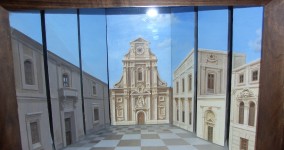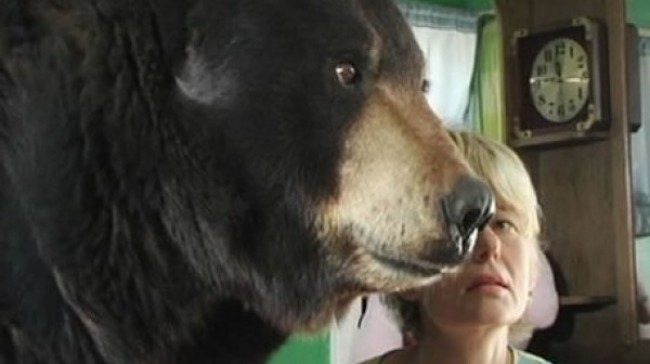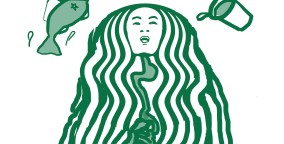
Exhibition at Museum of Jurassic Technology, completed May 2004
Scene Paintings by Jose Clemente Orozco
Production of the Museum of Jurassic Technology
Consultation by Dr. Frank Mohler, Appalachian State University
Guest Curator Rachel Mayeri
Miracles and Disasters in Renaissance and Baroque Theater Mechanics is an exhibition at the Museum of Jurassic Technology that showcases the spectacular scenery and clever machinery of sixteenth century festivals and seventeenth century Italian opera. Apotheoses, tempests, metamorphoses – ingenious devices pulled paintings across the stage, creating fantastic tricks of the eye that influenced opera and entertainment for centuries to come. In consultation with leading theater and art historians, the Museum reconstructed authentic scenic models of some of the most magical visions of the Baroque theatre. Simultaneously, the exhibition reveals and explains the machinery at work beneath the stage, using original, computer-enhanced electromechanical techniques. Together, the museum visitor witnesses what was partially hidden to seventeenth century eyes – the stage alive and moving through marvelous contraptions. This unique, permanent exhibition is an invaluable resource for theatre technicians, set designers, educators and the general public to visualize and enjoy the Baroque (and Renaissance!) origins of special effects.
The exhibition places special effects within a history of illusionism. The foundations of modern theater were consolidated by opera in the seventeenth century with the invention of perspective, the conventional use of the auditorium, proscenium, curtain, stage scenery and orchestra pit. Baroque stage scenery solved the standing problem of transforming two-dimensional surfaces into pictures of depth through perspective, lighting, masking and layering – the same tricks of illusion used today. Baroque theater technology mechanized scene changes formerly coordinated by hundreds of stagehands. Yet it was still dangerous, unruly and ungainly: hundreds of candles lit the stage, and devices for animating stage elements were heavy and made of wood. The differences between Baroque and contemporary special effects are perhaps most noticeable in motion. Transformations in scenery – scene changes, flying entrances and exits, and animated nature – shown a vista for the first time – may seem ludicrous and awkward to modern eye. Yet many of the experiments of the Baroque period became standard, and are still in use today.
Seventeenth century Venice is an important period to compare with our contemporary spectacle-loving society. An apex point in the history of special effects, with armies of carpenters, painters and stagehands struggling to put on the most fantastic, awe-inspiring displays, High Baroque scenic designers eventually overwhelmed the eyes and purses of courts they wished to please. Indeed, spectacle became grist for the mill for reformers, who believed that ingenious machinery (ingegni) interfered with the dramatic integrity of opera; others, moreover, exclaimed that the displays were so realistic that would eventually replace human imagination. Natural disaster, urban chaos, supernatural intervention, fantasy and the grotesque – the themes of Baroque opera still enjoy mass appeal in entertainment today.
Baroque opera, scholars have argued, reflected the vanities and anxieties of the European court. Texts on opera and court life in Venetian society underscore the power of theater through special effects to convey messages on the dangers and rewards of social performance. However, it seems, that special effects, like art and social expression in general, change with new technology, representing new events, economic forces and information. This poses the question of how special effects in popular entertainment reflect the anxieties of our society today. Yet the exhibition embodies the idea that special effects signify more than ideology: they create a vocabulary for the marvelous.




